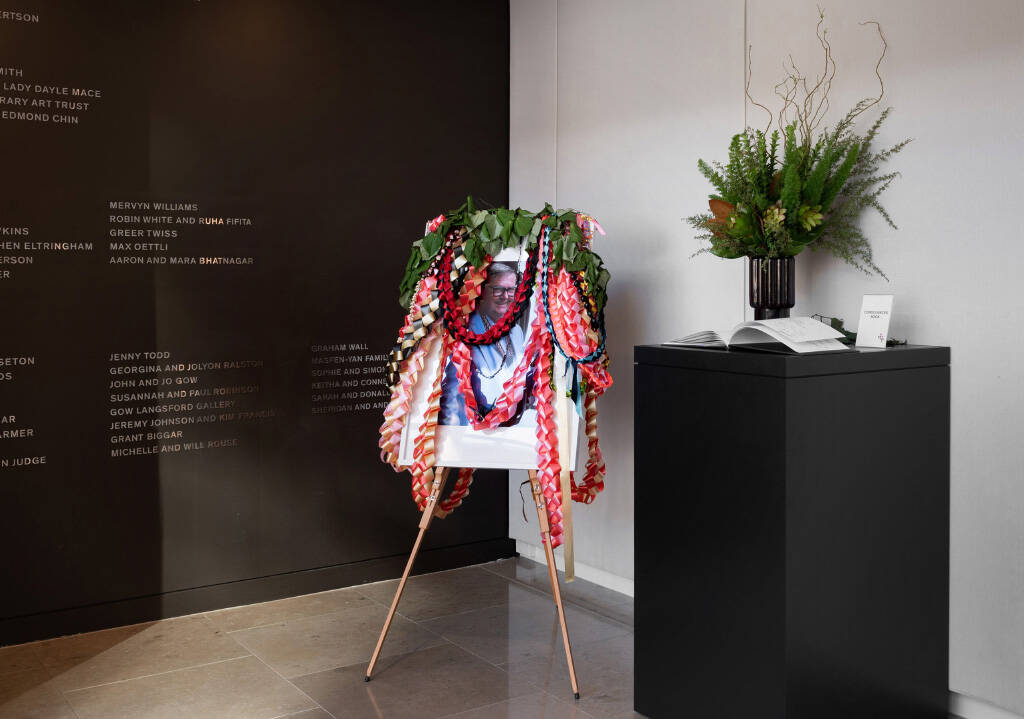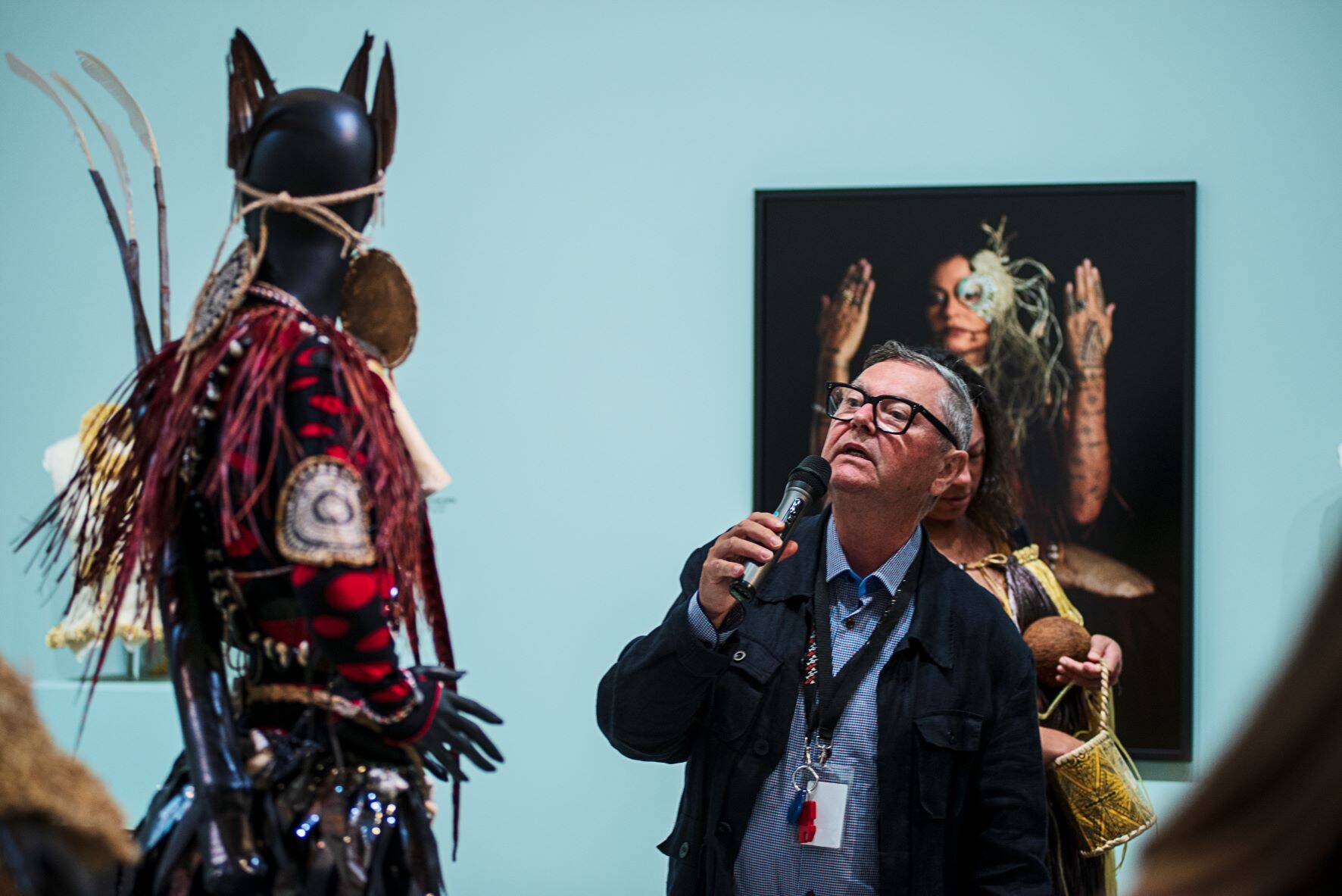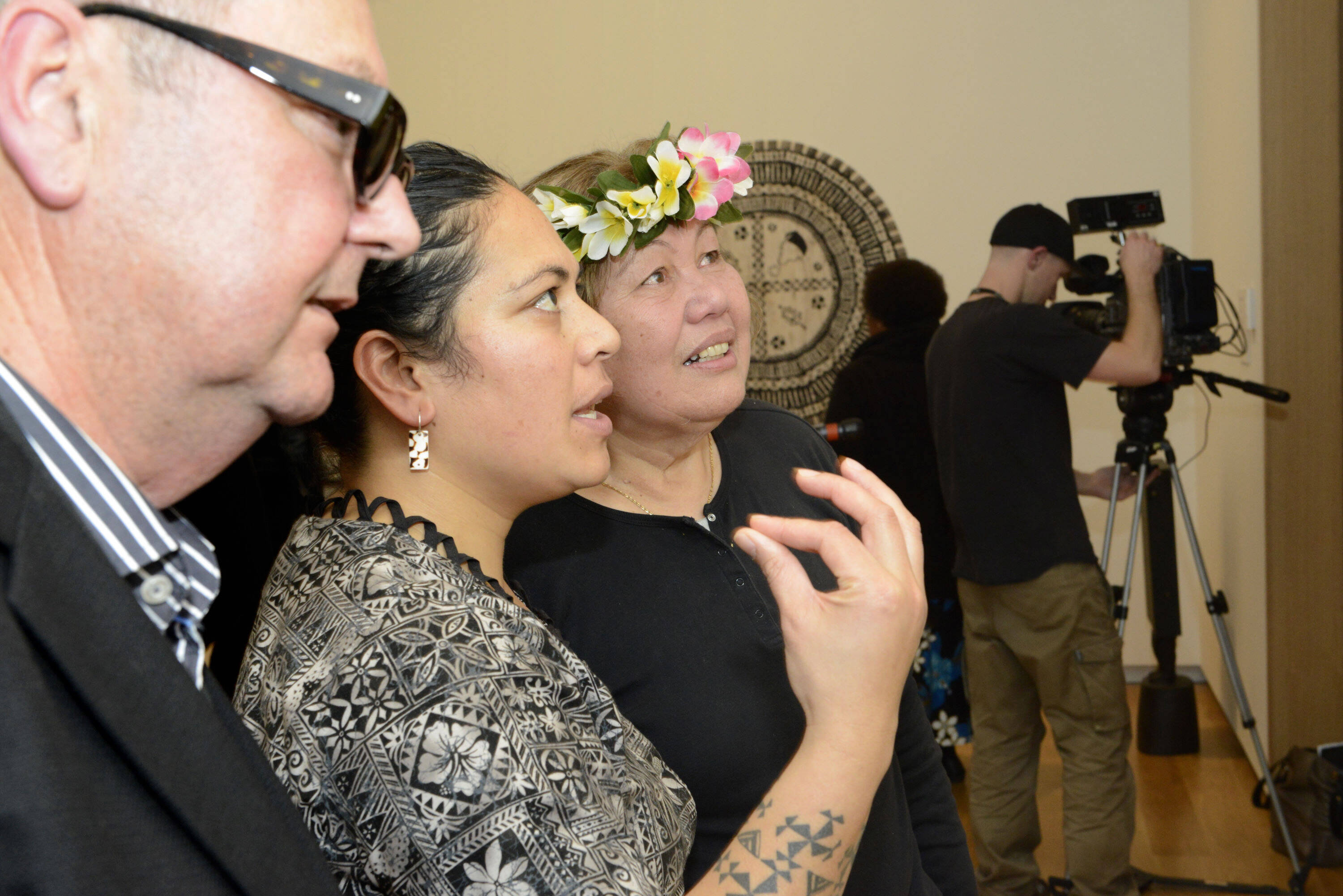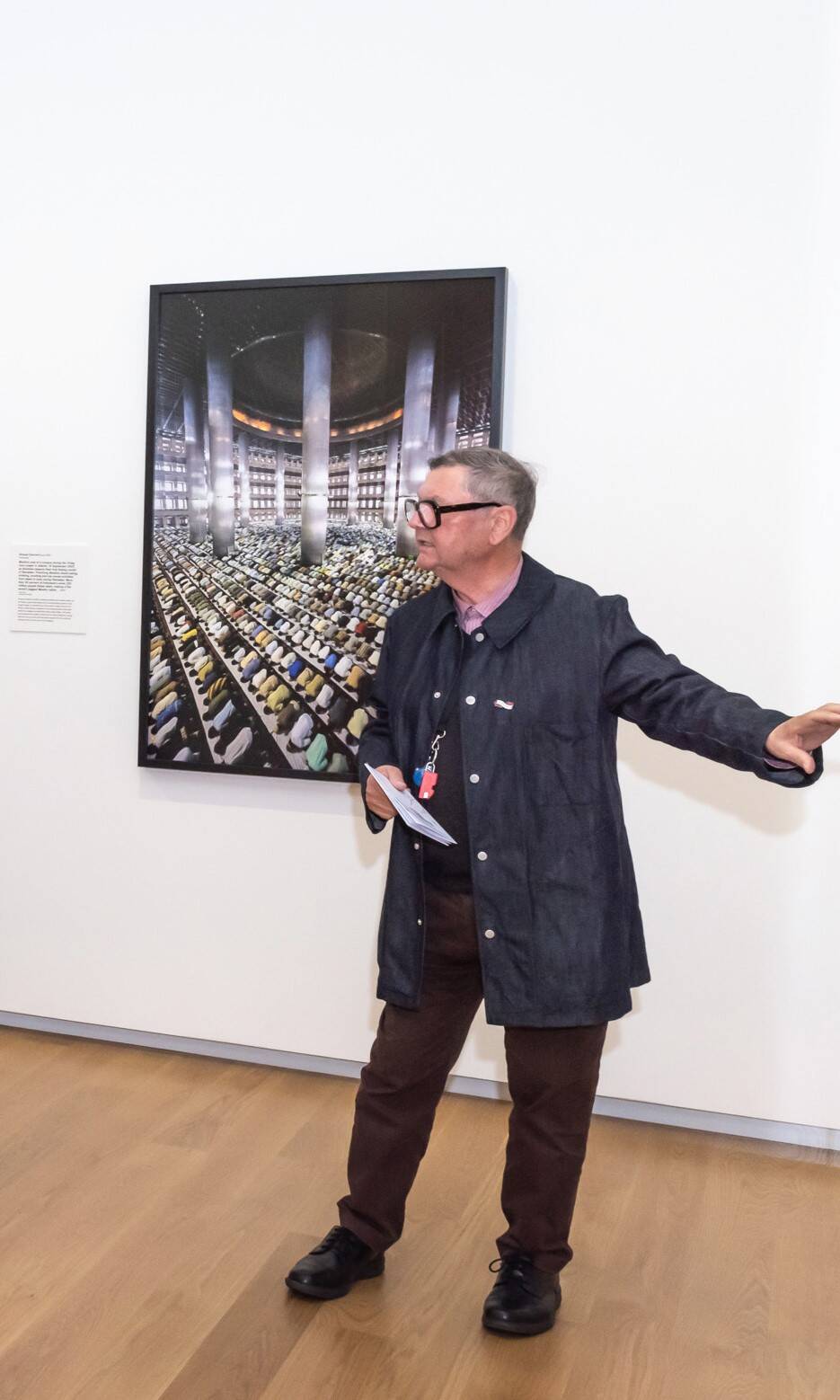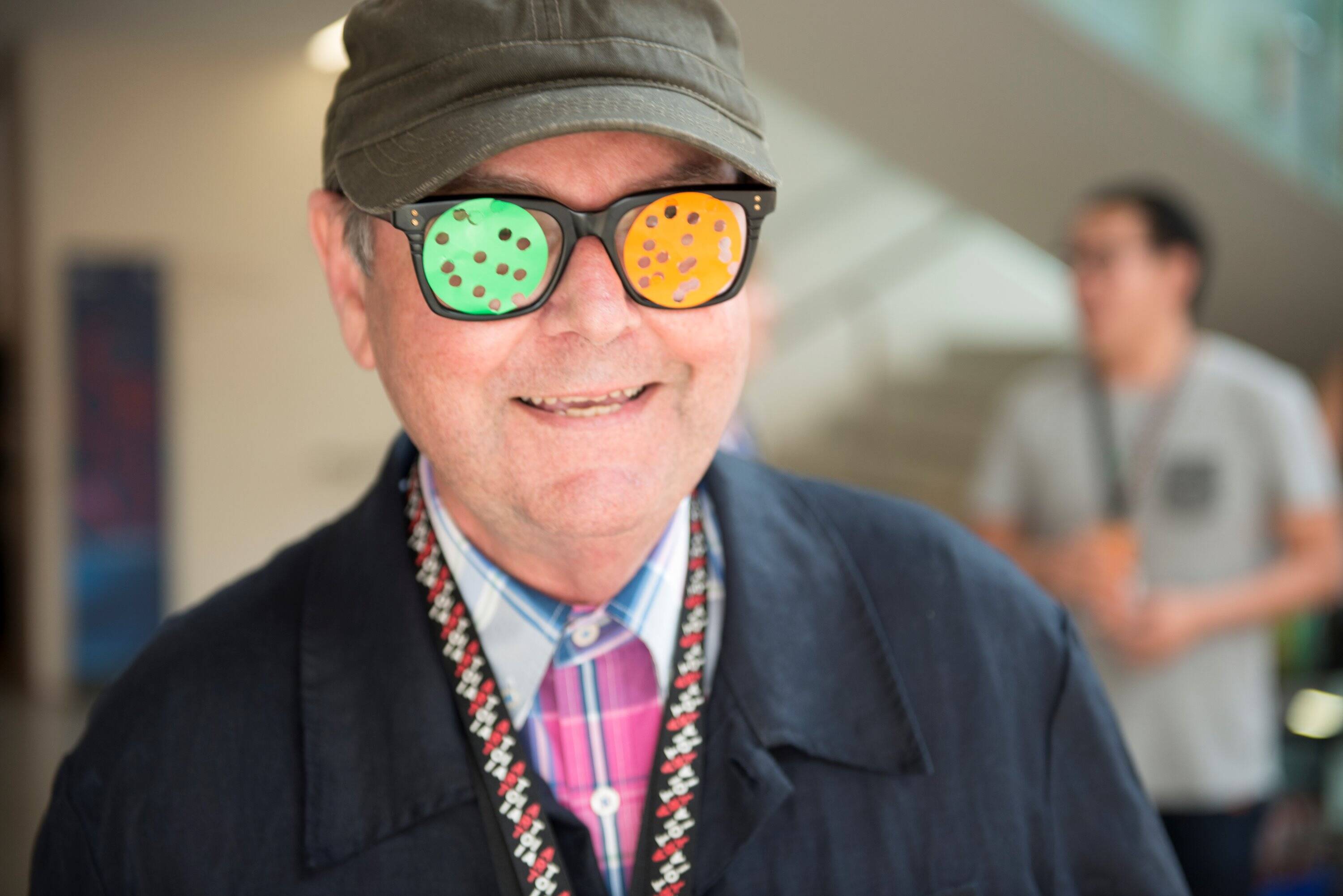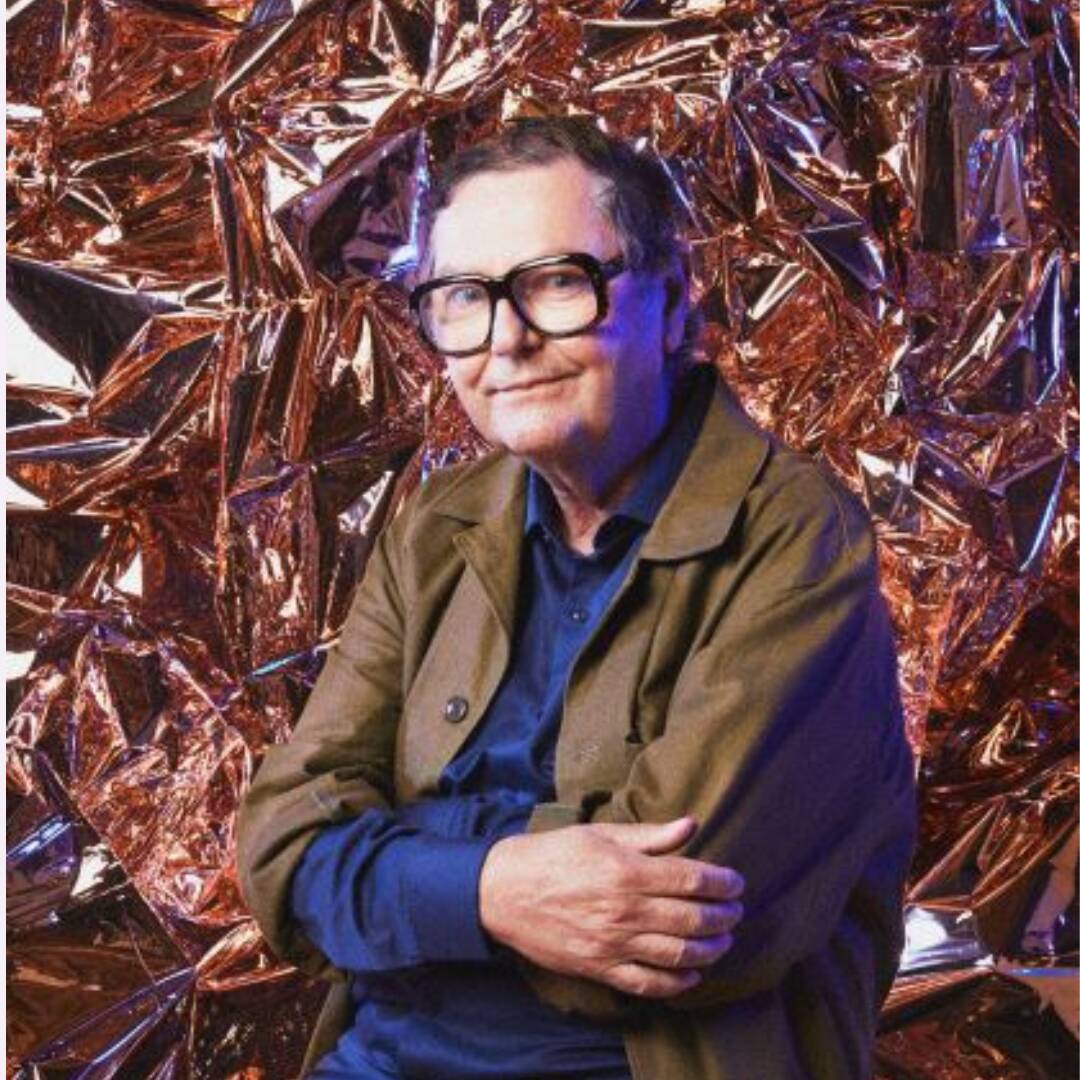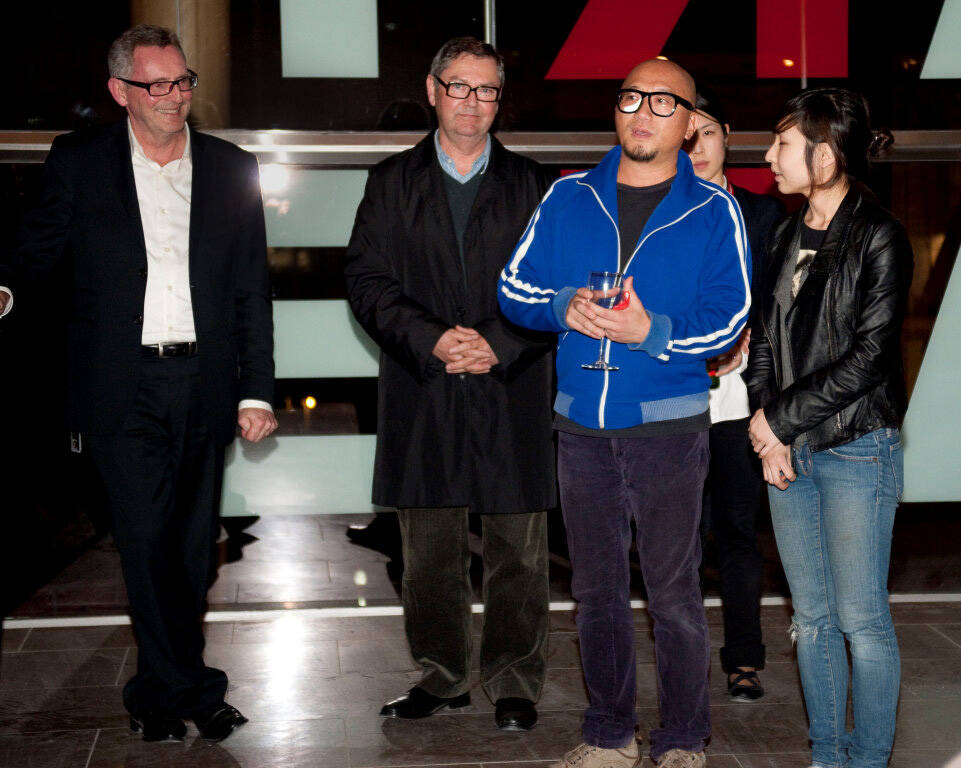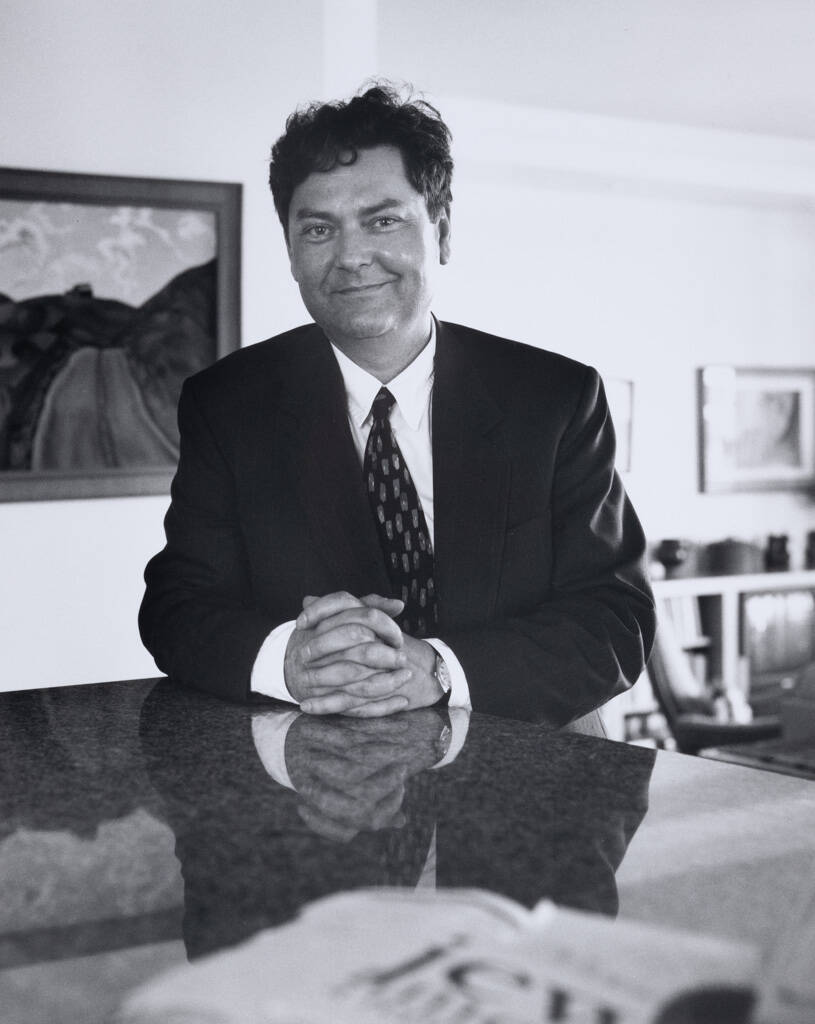Kua hinga te tōtara i te wao tapu nui a Tāne.
E te Rangatira, e te tohunga o te manaaki toi, e kara, e Ron. Peke tū ki ngā maunga whakahī tae atu ki te rerenga wairua, ki reira koe kauhoe atu rā ki ō Tūpuna, ki ō tini karanga maha. E kore koe e wareware i a mātou.
A tōtara has fallen in the great sacred forest of Tāne.
To the revered, to the expert in caring for art, to our friend, to Ron. Bound across the mountains all the way to Cape Reinga, from their swim forth to your ancestors, to your many genealogical connections that have passed before you. You will never be forgotten by us.
On Thursday 16 March we farewelled our dear colleague and friend Ron Brownson in a whakamaumaharatanga memorial celebrating his life. It was a very moving and special event, which conveyed how respected and loved Ron is, and the strong connections that he forged with people and communities across Tāmaki Makaurau Auckland. We invite you to watch the recording of the memorial – this, together with the programme for the event, is available at the bottom of this page.
The speeches at the memorial – shared by Mary Trewby, Natasha Conland, Fatu Feu'u, Dagmar Dyck and Siliga Setoga – illustrate the breadth of Ron’s expertise, passion and care.
It’s exceedingly difficult to adequately encapsulate the legacy of Ron Brownson in words. As librarian, curator, colleague and mentor, his impact and contributions are immeasurable. In the artworks he acquired, the archives he carefully accumulated, the exhibitions he curated, the pithy blog posts he wrote, and catalogues he helped create, he will always have a tangible presence in the kaupapa of Toi o Tāmaki. Yet these only go so far in capturing who he was and his contribution to life and art – his extraordinary breadth of knowledge, relationships, and multi-layered facets of his unique personality are indefinable.
In addition to the tributes shared at the memorial, we have brought together reflections from colleagues, artists, gallerists and friends, which show what a beloved and respected person Ron was. Together they weave a tapestry of fond memories, witty anecdotes, and reflections on his lasting influence. As Dame Jenny Gibbs notes, ‘we will never get the full picture but can show how much he was loved’.
Further tributes will be posted in the coming days. There is also a condolences book at the Gallery, which we invite you to contribute to.
